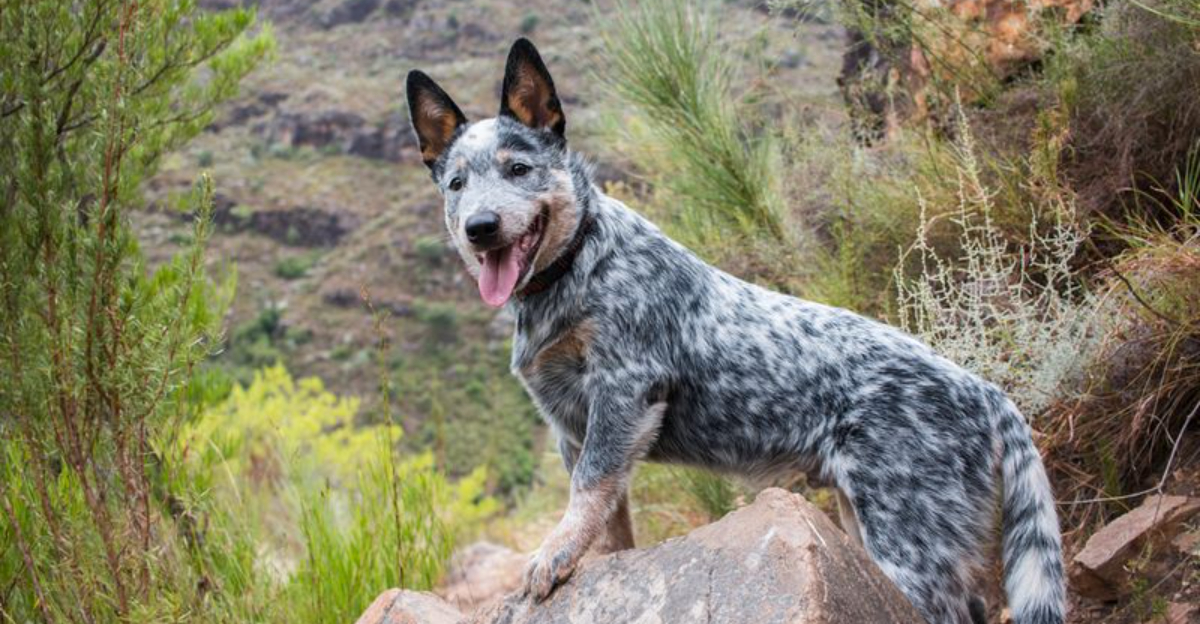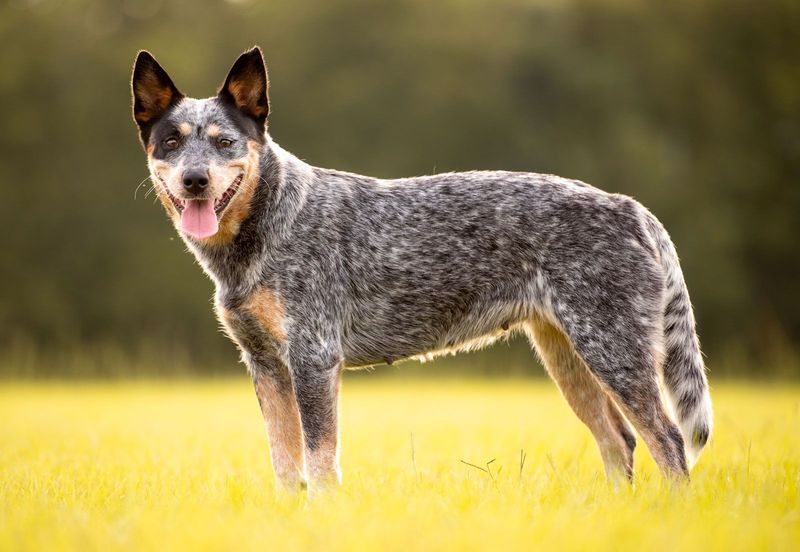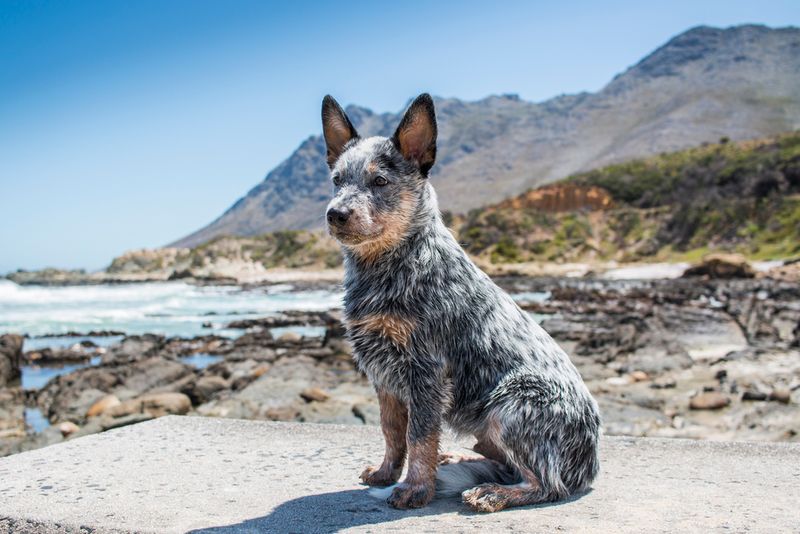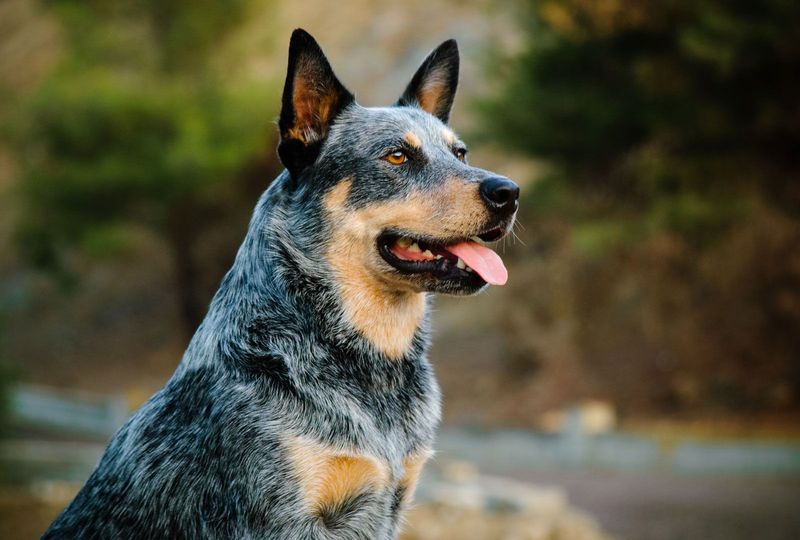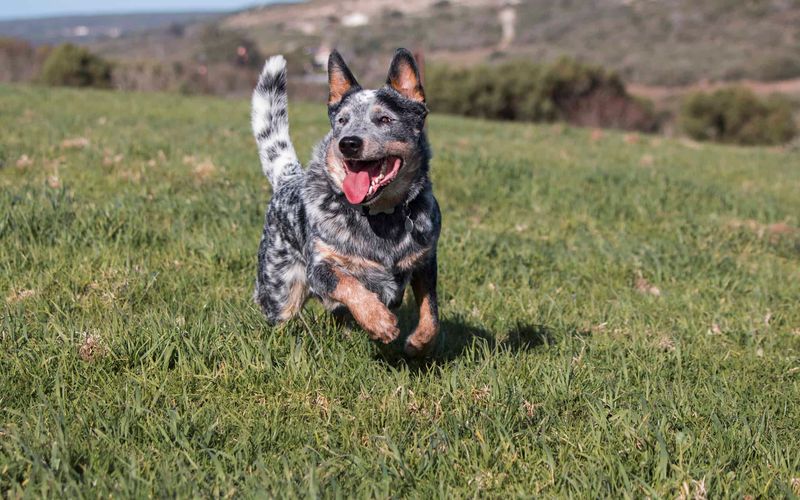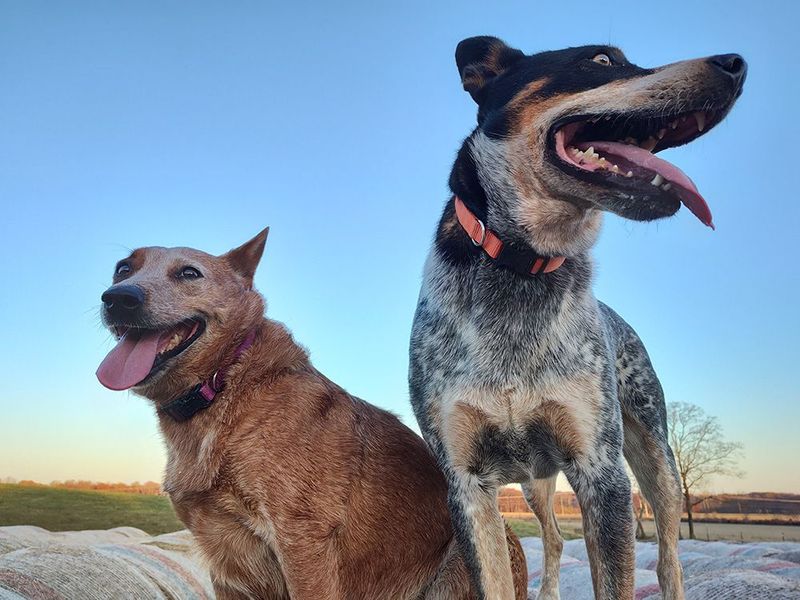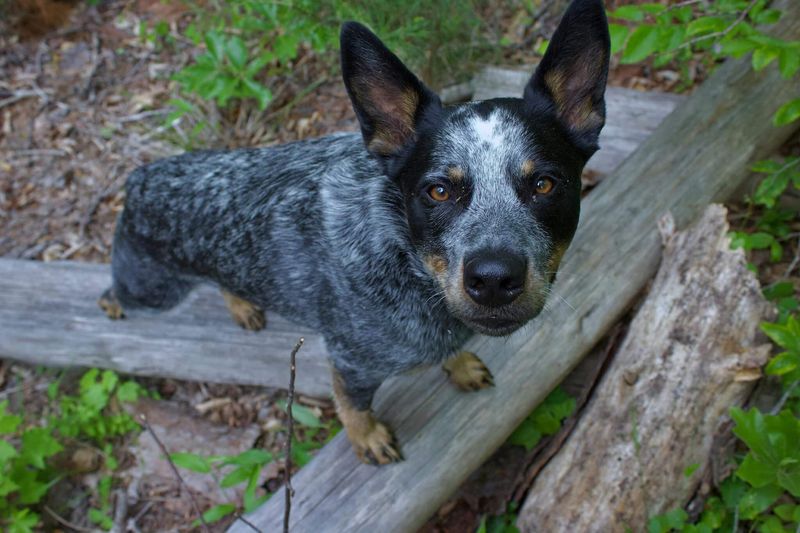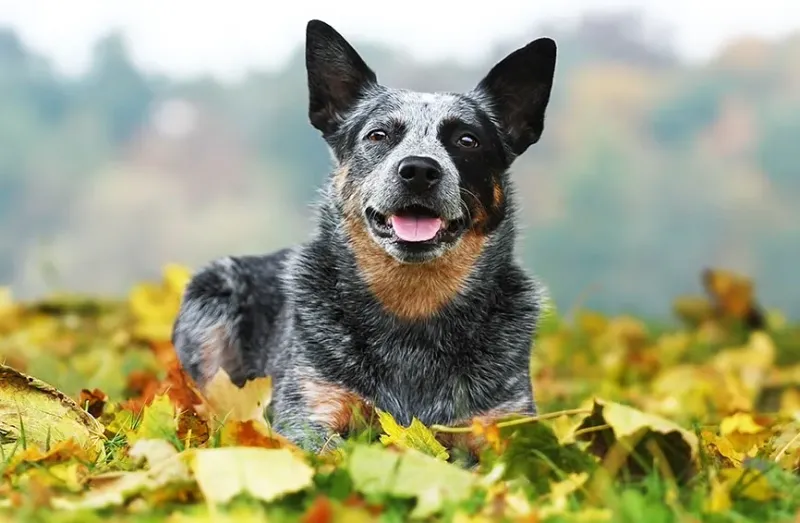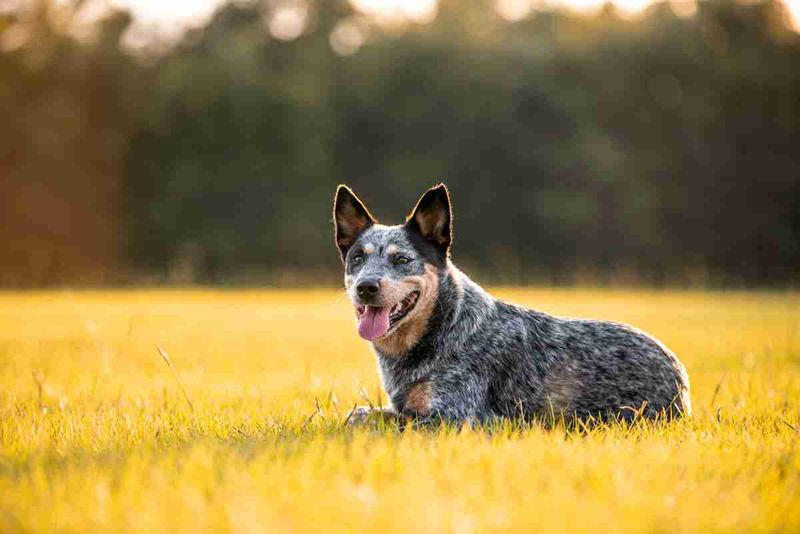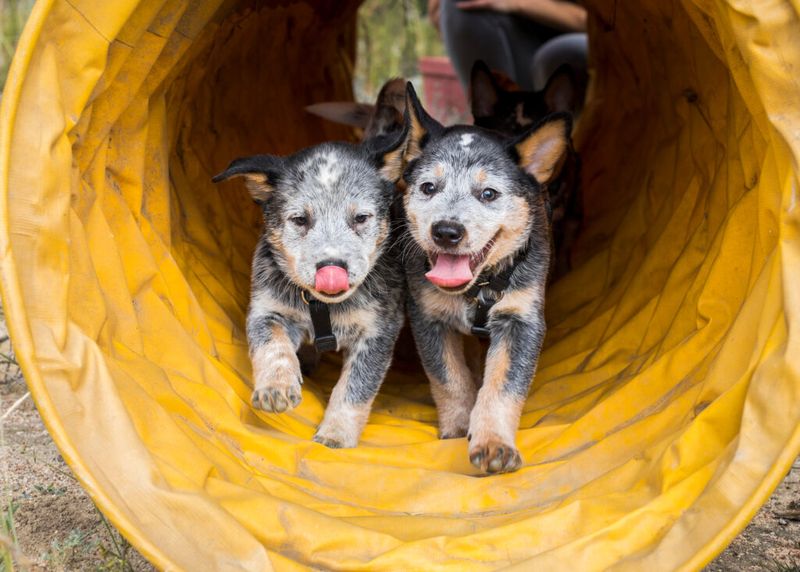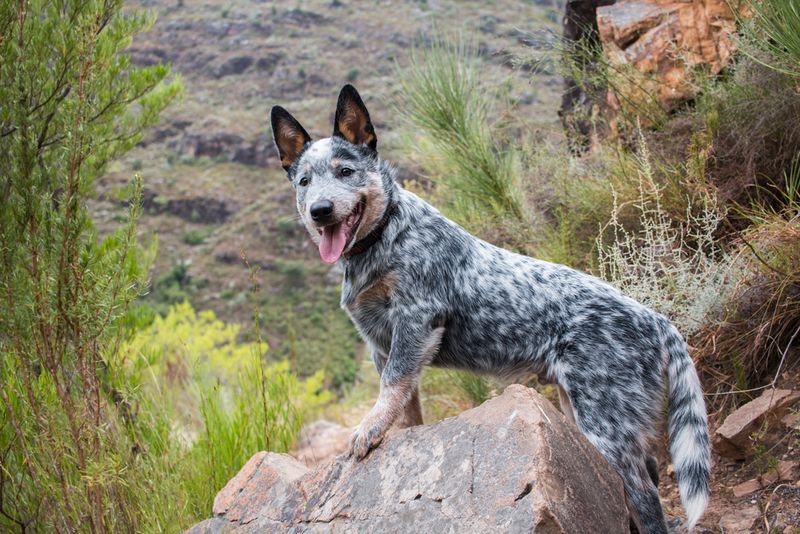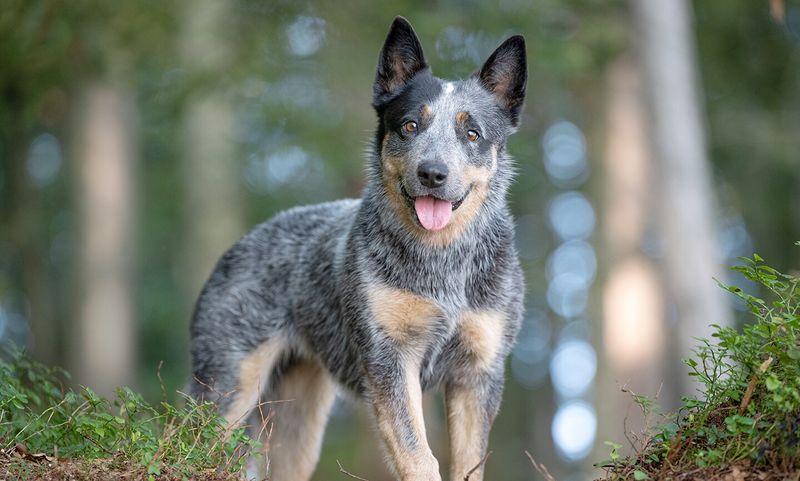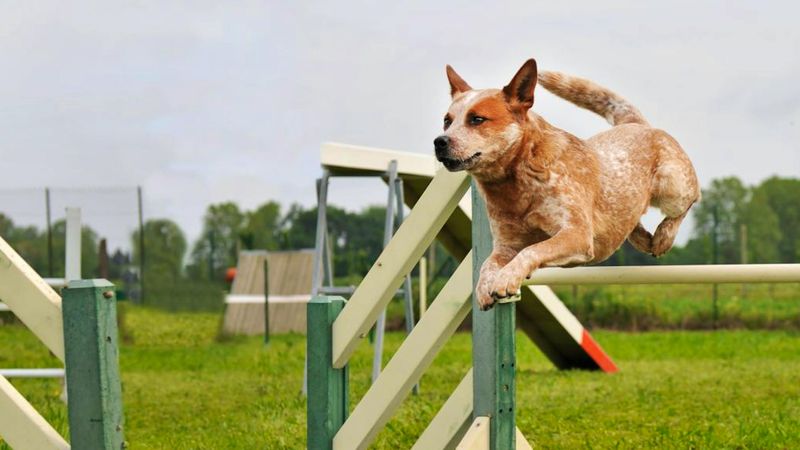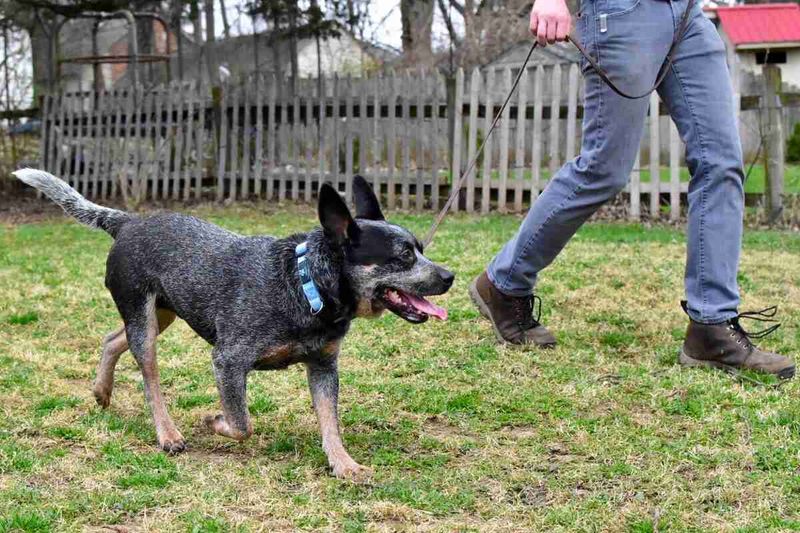The Australian Cattle Dog, affectionately known as the Blue Heeler or Queensland Heeler, is a robust and intelligent breed renowned for its herding prowess and boundless energy. With a lineage tracing back to the wild Dingo, this breed is built for endurance and hard work. Australian Cattle Dogs are not only exceptional workers but also loyal companions, making them a favorite among farmers and active families alike. Their unique combination of intelligence, agility, and resilience makes them a fascinating subject for anyone interested in exploring the characteristics of working dogs.
History and Origin
The Australian Cattle Dog’s story begins in the 1800s when settlers in Australia needed a resilient dog to herd cattle in harsh conditions. This breed was developed by crossing the native Dingo with the Blue Merle Collie, producing a dog with exceptional stamina and intelligence. Over generations, the breed was fine-tuned to enhance its herding capabilities, leading to what we now know as the Australian Cattle Dog. Today, they are celebrated not only for their work ethic but also for their unique history that reflects the rugged Australian outback.
Physical Characteristics
A distinctive feature of the Australian Cattle Dog is its striking coat, which comes in blue or red speckled patterns. These coats are not just for show; they provide protection against the elements during long days of herding. Their medium-sized, muscular build speaks to their strength and agility, essential traits for navigating rough terrains. Combine this with their sharp ears and intelligent eyes, and you have a dog that’s always ready for action, embodying both beauty and brawn in its physical form.
Temperament and Personality
Known for their spirited and energetic nature, Australian Cattle Dogs are not your average couch potatoes. They thrive on physical activity and mental challenges, making them ideal companions for active individuals. Despite their rugged demeanor, they are affectionate and loyal, forming strong bonds with their families. Their alertness and keen intelligence mean they are quick learners, though sometimes their independent streak requires patient training. With the right environment, they become devoted and enthusiastic partners in adventure.
Training and Intelligence
Training an Australian Cattle Dog can be both a rewarding and challenging experience. Their intelligence is remarkable, allowing them to grasp new commands quickly. However, their independent nature can sometimes lead to stubbornness. Consistency and positive reinforcement are key to harnessing their potential. Early socialization is crucial, as it helps them adapt to various environments and situations. For those willing to invest time and effort, these dogs excel in obedience and agility training, showcasing their impressive cognitive abilities and eagerness to please.
Herding Instincts
The herding instincts of the Australian Cattle Dog are legendary. Developed specifically for managing cattle, they are naturally driven to control the movement of livestock. This instinct is rooted deeply in their DNA, and it’s not uncommon to see them trying to herd other animals or even people during play. Their strong drive requires regular outlets for this behavior, such as herding trials or interactive games. Providing these opportunities ensures they remain happy and mentally stimulated, preventing the development of unwanted behaviors.
Exercise Needs
These dogs are bundles of energy that require a significant amount of exercise to maintain their health and happiness. An Australian Cattle Dog thrives on daily walks, runs, and play sessions. Without sufficient physical outlets, they can become bored, leading to destructive behaviors. Engaging them in activities like fetch, hiking, or agility courses can channel their energy positively. Owners should be prepared for a lifetime commitment to keeping these active dogs engaged and fulfilled, ensuring they remain the lively and spirited companions they are meant to be.
Health and Lifespan
Australian Cattle Dogs are generally robust and healthy, with a lifespan of 12 to 15 years. However, like all breeds, they can be prone to specific health issues such as hip dysplasia and progressive retinal atrophy. Regular veterinary check-ups and a balanced diet are essential to maintaining their well-being. Staying informed about potential genetic conditions and early detection through screening can ensure a long, healthy life. By providing a nurturing environment and attentive care, owners can enjoy many years with these lively and dedicated companions.
Diet and Nutrition
Feeding an Australian Cattle Dog requires careful consideration of their dietary needs. A balanced diet rich in protein is crucial for supporting their active lifestyle. High-quality commercial dog food or a well-planned homemade diet can meet their nutritional requirements. It’s essential to monitor their weight and adjust portions accordingly, as these energetic dogs can sometimes overeat if not properly managed. Providing adequate hydration and avoiding overindulgence in treats ensures they stay fit and healthy, ready for any adventure that comes their way.
Socialization Requirements
Socialization is a critical aspect of raising a well-rounded Australian Cattle Dog. Exposing them to different environments, people, and animals from a young age helps build their confidence and adaptability. These experiences prevent the development of fear or aggression, common issues if they remain isolated. Organized playdates, puppy classes, and regular outings are excellent ways to nurture their social skills. Owners who invest time in socialization create harmonious relationships, making these dogs well-adjusted and friendly members of any community.
Grooming and Maintenance
Although Australian Cattle Dogs have short coats, regular grooming is essential to keep them looking their best. Brushing once or twice a week helps remove loose hair and reduces shedding. During shedding seasons, more frequent grooming may be required to manage their dense undercoats. Bathing is only needed occasionally unless they get particularly dirty. Regular dental care, ear cleaning, and nail trimming complete their grooming routine, ensuring they remain comfortable and healthy throughout their active lives.
Compatibility with Families
Australian Cattle Dogs can make wonderful family pets, known for their protective and loyal nature. They thrive in households that understand and meet their exercise and mental stimulation needs. With proper training and socialization, they become affectionate companions, particularly enjoying playtime with older children who match their energy levels. While they are gentle with family members, they can be reserved with strangers, making early socialization crucial to their development as friendly yet discerning members of the family.
Activities and Sports
The Australian Cattle Dog excels in various canine sports and activities due to its high intelligence and agility. From herding trials to obedience competitions, these dogs are versatile athletes. Engaging them in activities like flyball or agility courses not only fulfills their physical needs but also strengthens the bond with their owners. These sports provide an excellent outlet for their energy, satisfying their natural instincts and preventing boredom. Owners who participate in these activities with their dogs often find it a rewarding experience, filled with teamwork and joy.
Adoption and Rescue Considerations
Adopting an Australian Cattle Dog is a fulfilling experience for those ready to embrace their unique needs. Many end up in rescues due to their high energy levels, which some owners find challenging. Prospective adopters should research and understand the breed’s requirements to ensure a successful match. Rescue organizations provide valuable insights and support, helping families integrate these lively dogs into their homes. By choosing adoption, individuals not only gain a loyal friend but also give a deserving dog a second chance at a happy life.
